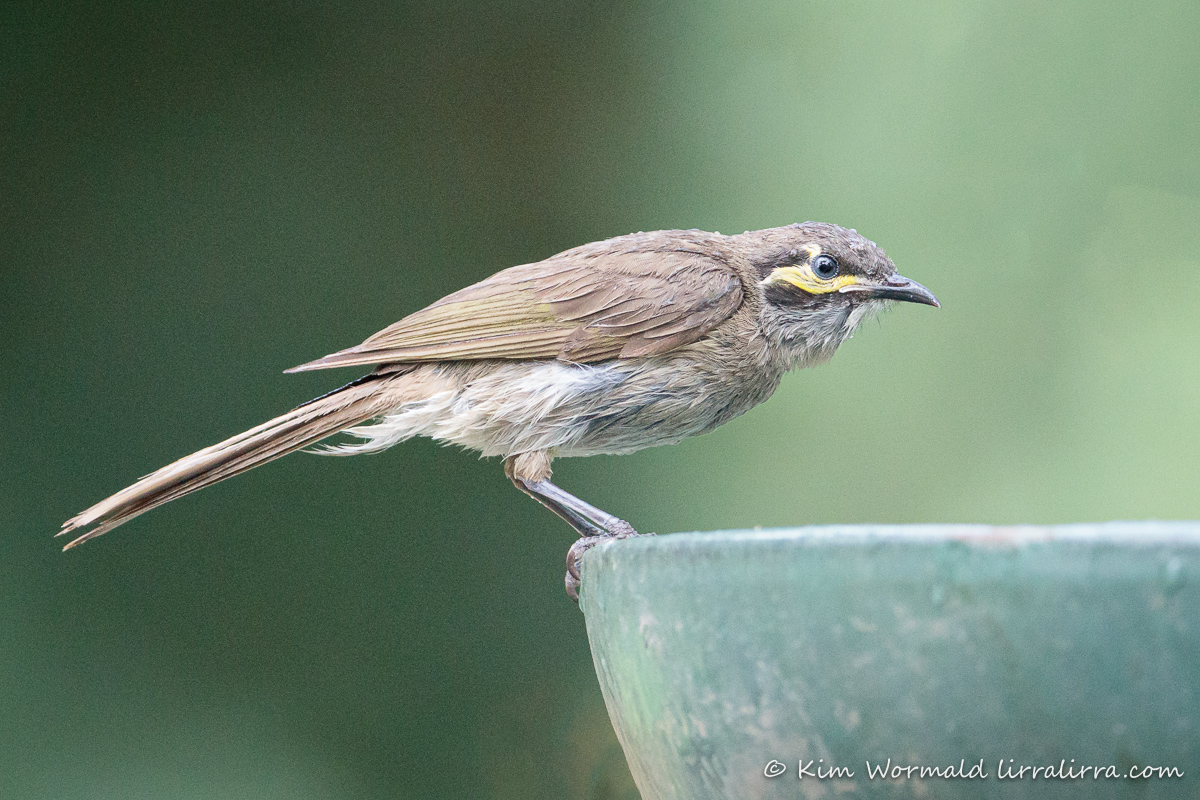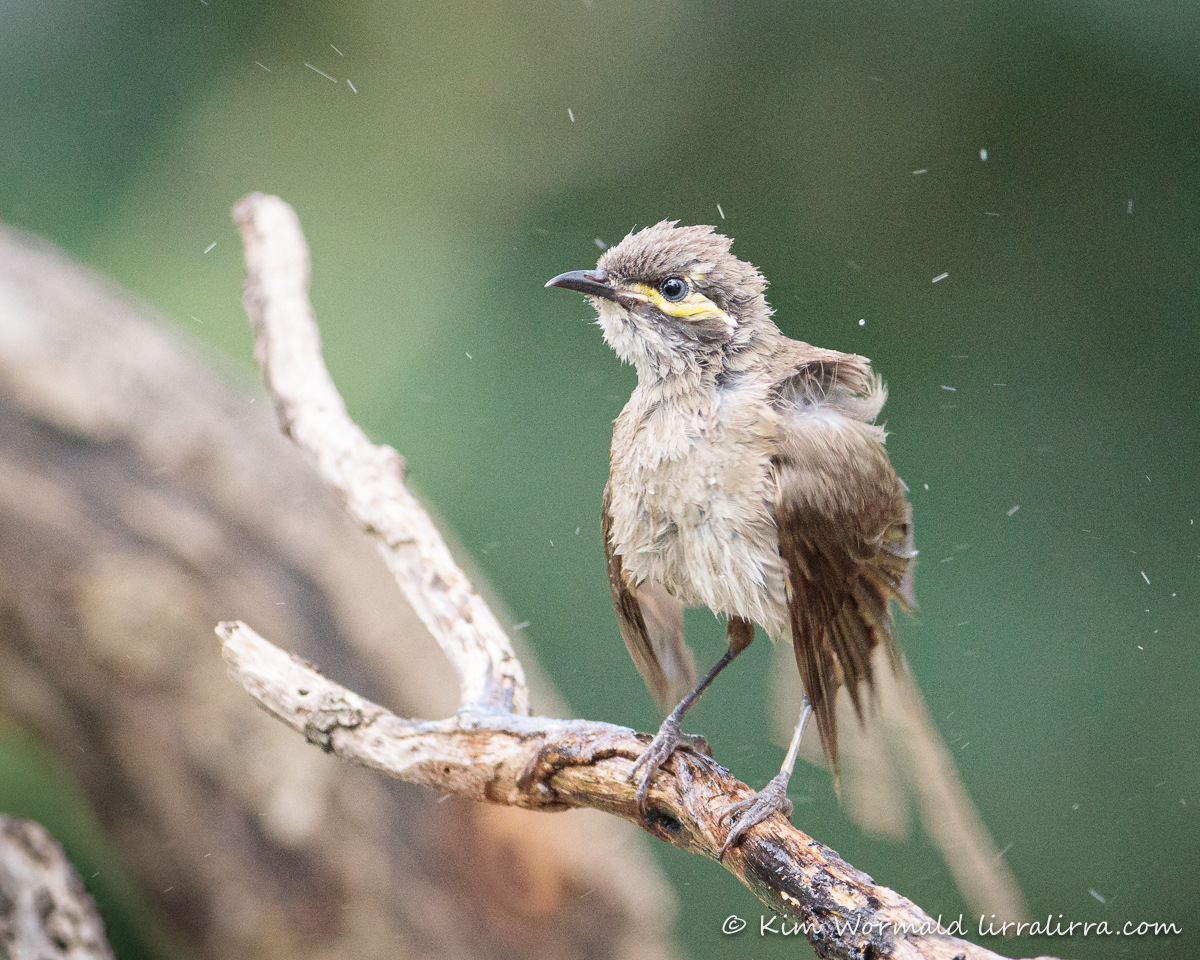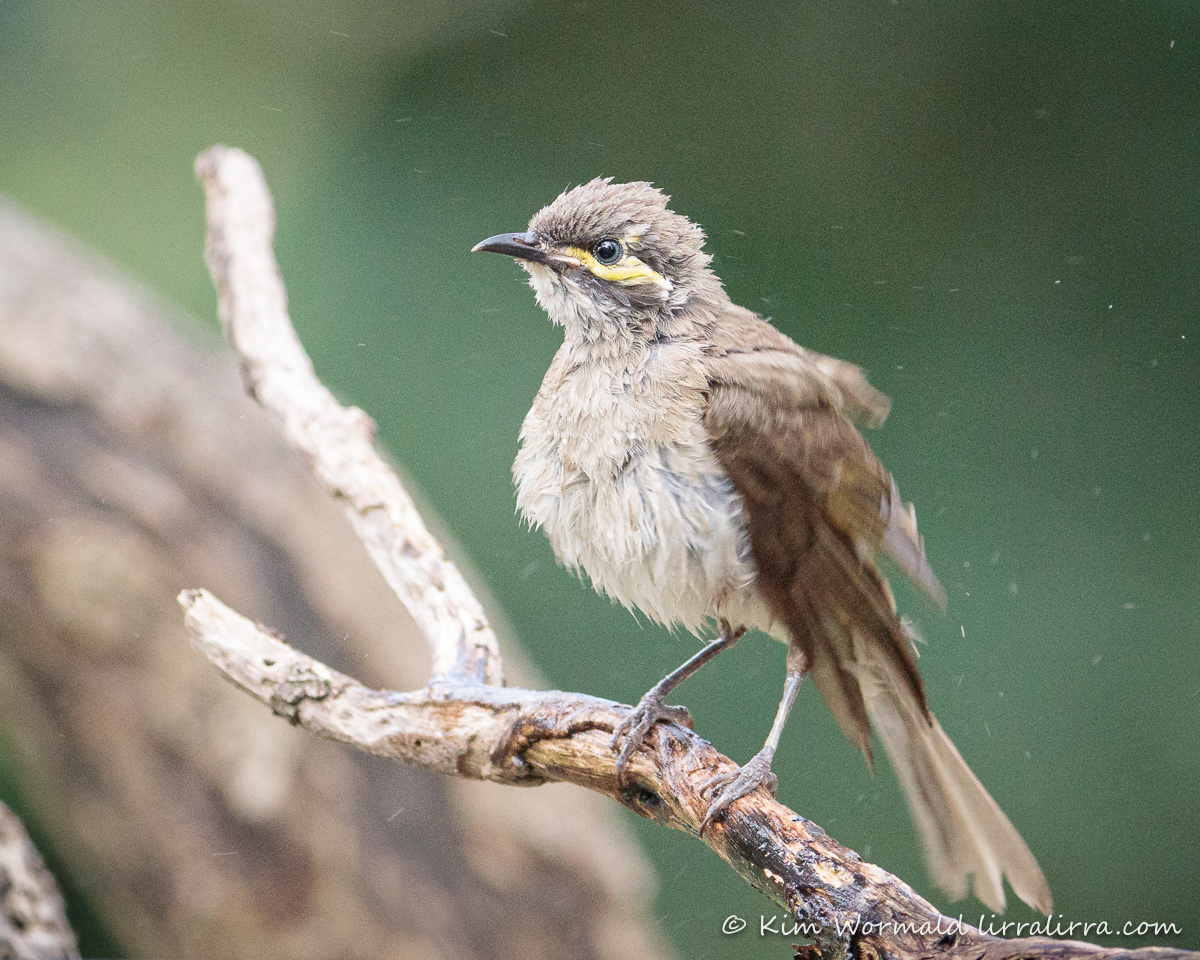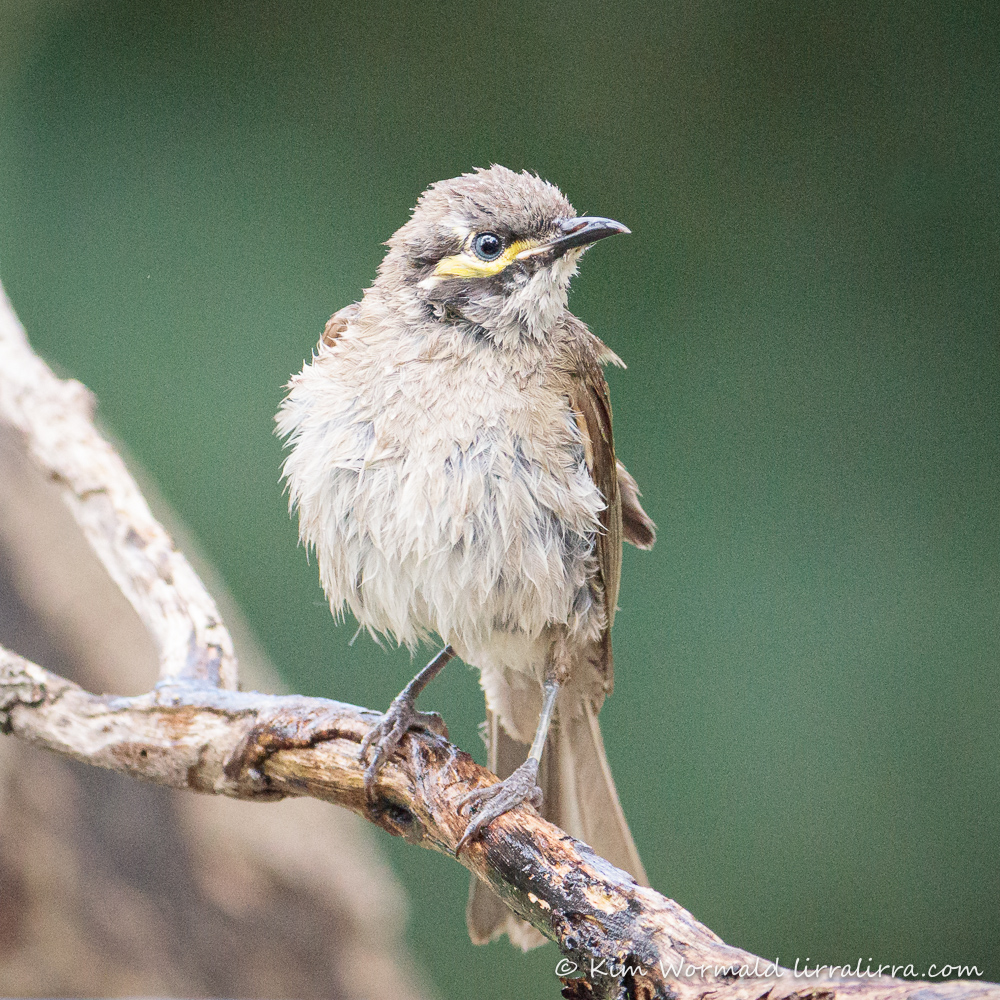I was all ready to write this post half an hour ago, the title was up and the photographs were chosen and exported but instead of writing the first sentence I looked through the window. I often pause for a while to watch the antics at the birdbaths but today I ran for my camera as a female Rufous Whistler was taking a very leisurely bath. Only fellow-birders like us would understand the thrill of seeing something beautifully unexpected. I hear Rufous Whistlers in the bush but they rarely venture the few metres across the grass to the birdbaths. I don’t think the photographs will be worth sharing as they were taken through the window, hand-held with the tripod dangling, but hopefully she’ll come back while I’m outside tomorrow. Back to business…

1/640, f/5.6, ISO 2500
Canon 5DSR, Canon 200-400L IS USM EXT
I chose the shot above to start the post as it looks as though the Yellow-faced Honeyeater has just arrived at the birdbath. If you look closely you’ll see that its under feathers are wet and that it has tiny beads of water on its head and back – after seeing a Grey Fantail fall from the sky on its way to the birdbath I am always super careful to let birds drink or bathe before I photograph them.

1/640, f/5.6, ISO 2500
Canon 5DSR, Canon 200-400L IS USM EXT
Yellow-faced Honeyeaters are often described as ‘plain’ but I find them quite charming. I really like the bold yellow ‘go faster’ stripe beneath their deep blue eyes. I don’t always capture the forward position of a birds’ wings as it vigorously shakes itself free of water.

1/640, f/5.6, ISO 2500
Canon 5DSR, Canon 200-400L IS USM EXT
Here’s the next shot in the series. I’m on the far side of my patio, quite a long way from the birdbaths but despite my shutter being set to ‘silent’ this bird did glance towards me a few times.

1/640, f/5.6, ISO 2500
Canon 5DSR, Canon 200-400L IS USM EXT
How could this lovely species be called ‘plain’! There are 76 species of honeyeater in Australia, which is about half of the number of the worldwide Meliphagidae family. They have de-curved bills and brush-tipped tongues that are ideal for feeding on nectar, though many also eat insects.
A good news update on my wrist for regular readers: despite its awful name (giant cell tumour) the lump was benign. The incision site was progressing well until I played with toddlers on Wednesday, and got my hand stuck down the back of a radiator last night trying, unsuccessfully, to retrieve my trapped phone. Never a dull moment.
The temperature reached just over 40C here today, according to my weather station. The birds have been constantly at the bird baths with several species bathing together at the moment. I am blessed, and I hope you are too.
Happy birding, Kim
~ Prints and gifts Lirralirra Shop
~ Facebook page Kim Wormald – lirralirra
~ Facebook group Ethical Bird Photography

Has a small beak.
I siting my TV room watching honey eaters.
Eastern Spinbill are profuse, but incredibly fast.
Love birds.
Especially compared with Eastern Spinebills (that I’ve been photographing and watching this week). It’s so lovely to see these birds in our gardens.
Gosh what a gorgeous little bird. I love the ones with the ruffled feathers. Interesting re half the honeyeaters being in Australia.
Stunning pictures as always and a big hooray re your wrist 🙂
I think they’re gorgeous! I didn’t mention that they are only around for the summer, it’s always lovely when they reappear once the coolest winter days have passed.